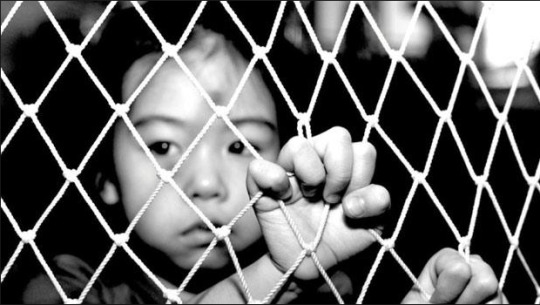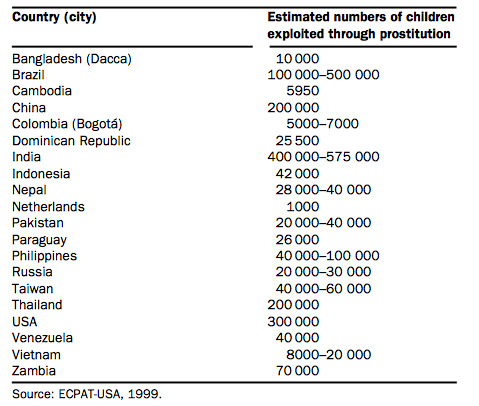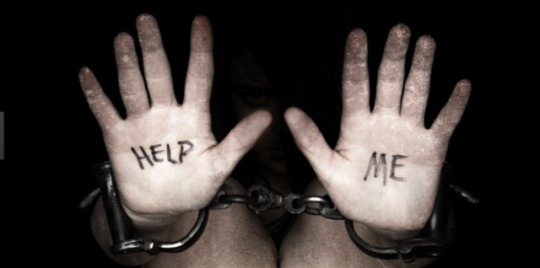Don't wanna be here? Send us removal request.
Text
Hey,
I like how you tackled this issue in a thorough manner and provided an amid amount of detail to your research. I see the connections and notice the patriarchy I see at my own job. The relation to “No More Invisible Man” and “Women Without Class” made me understand why and provided examples of the persistence of this inequality. I like how you brought up how gender shapes our behavior and causes us to create our own gender bias. The basis of one gender’s expectations influences the other gender’s expectations causing them to coincide and go hand in hand. I enjoyed the imagery you provided as well as the layout. Great work!
-Anna
Status Effects/Social Relational Contexts:
Gender is a socially constructed label that represents one’s status in society and shapes the relationships of whom they connect with. Gender is one of the main frames of reference when interacting with people as well as a main means of identity shaping. Ridgeway makes the argument that society’s dependence on gender is one of the many ills that oppress women because in a sense we are “doing gender” (Ridgeway: 146) because we continue to allow these interactional processes to persist. This overlaps with the previous mechanisms but it is still unique in its own right. Gender shapes our behavior, which effects the way we interact are interacted with during work. Like the previous post on attitudes and gender culture, gender determines a part of our perceived identity without our conscious effort to do so. Gender is traditionally black and white, although now we are facing a spectrum on the basis of gender, that is a conversation for another blog. Gender is a status symbol, it tells others around you what you are like without having a conversation first. Gender determines a lot for someone. It may decide whether or not you will be a likely candidate for a math contest or a science fair; or if you are acceptable to become a nurse or a flight attendant. These expectations influence the interactions we have with others. Almost everything in society is gendered, because as humans we have to give it a label, a title, a general idea in order to understand what the thing is. Therefore, the interactions within the workplace are determined by the gender of the employees interacting. We behave based on the expectations pushed upon us, and/or we are perceived through a lens of the gendered expectations by those around us which impact our role and place within an institution. In Adia Wingfield’s book, No More Invisible Man, she discusses the forms of tokenism for colored men and women as well as white men and women. Ultimately, males are privileged with more opportunity and resources because of the gender framework through which we operate. Whereas women, especially colored women, are the most disadvantaged and have frequent negative encounters with their fellow white-male colleagues, which often prevents these colored women from entering into the professional workforce. Another example would be from Julie Bettie’s book, Women Without Class, where she studies the socioeconomic disparities between ethnic young girls versus white girls and boys in Central Valley, California. Through a gender and race framework, Bettie witnesses the social interactions between teachers, students and families with the high school Mexican-American girls. Girls who were labeled as ‘las chicas’ were blatantly ignored by their teachers, in fact during one of Bettie’s interviews with a teacher in the faculty room, a teacher joked that they would amount to nothing aside from becoming “’barefoot and pregnant’” while other teachers acknowledged these girls as “’trouble’” (Bettie, 2003). The ‘las chicas’ were hypersexualized, due to their low class status, Mexican race and female gender. Because of society’s expectations of them, they conformed to the promiscuous, bad-girl reputation. They based their self-worth from their physical attributes as a female –they had no aspirations to attend college because the expectations were not present for them and the resources and encouragement was not nearly as available as it was for boys and white girls. Teachers interacted with them differently, they did not pay attention to them because they did not expect them to amount to anything; parents put in less effort for their daughters in comparison to their sons because they assumed men had a better likelihood for success. Women are immediately met with a lower status than men because of the gender framework that favors males; therefore resulting in less chances for opportunistic encounters and interactions that will give them upward social mobility.
1 note
·
View note
Text
Hey Shawn,
I liked how you brought up the privacy issue with women in combat, I would have never thought of that as an issue. I was surprised to see how rape and attempted rape were and can only imagine it’s gotten higher since 2004. Do you know if these cases were reported or known about by the military? I wonder how they would tackle that case in regards that it is a woman versus a man’s word. Your blog was overall well put together and laid out. It was very interesting to read!
-Anna
Problems with allowing women to join all male ground combat units are privacy issues. The military should not have to worry about issues within a unit when soldiers are walking the streets of Afghanistan, when troops are at battle, they do not have separate areas for men and women to sleep or change in; they all have to change in front of each other, which can be very awkward for women. Sgt. Amanda Solitario once explained, “even though the unit was stand-offish toward her at first, they warmed up to her after one day. However, sleeping in a room full of men with no privacy to change her clothes or use the bathroom was uncomfortable.”(Solitario) Not only does this just make things uncomfortable, but this can also pose a problem with sexual attraction and possibly even rape. In the article The Truth About Women in Combat, it is stated that, “where men and women are put together, sex will follow. So will pregnancy – which is of course grounds for removing women from active duty.”(Frum) Sexual attraction is a problem here because it can potentially cause pregnancy, which is an immediate ground for dismissal. If the woman in the unit gets dismissed, that means one less soldier is there to back everyone up, which can get dangerous. Another possible problem with women in combat is rape either within a unit or with the enemy. According to a 2004 study funded by the Army Medicinal Research Department, “30% of women veterans said they were raped while serving… 37% of the attempted raped and raped women in the study also reported being raped more than once and 14% of them reported being gang raped.”(Sadler) This study shows what woman face within co-ed units, allowing woman in all male units would make the numbers increase. Women should not be allowed to serve in ground combat because of how dangerous it could be for this reason. A privacy issue is a big concern for woman in the army and if woman were allowed even more roles and jobs in the military, there would be a bigger problem than there is already. Putting a female in the mix of mostly just men would cause major problems for the army and all the women serving.
1 note
·
View note
Text
Child Prostitution
Child prostitution is a huge worldwide issue that presently can't seem to get proper restorative and general wellbeing consideration. Around the world, an expected 1 million children are constrained into prostitution consistently and the total number of undermined children could be as high as 10 million. Information lacks to exist on the medical issues confronted by undermined kids, who are at high danger of infectious disease, pregnancy, mental illness, substance abuse, and violence. Child prostitution, like other forms of child sexual abuse, is not just a reason for death and high morbidity in a huge number of kids, additionally a gross infringement of their rights and respect.
Social, cultural, and economic factors contribute to child prostitution through gender bias, discrimination, poor education, and poverty. In some communities, prostitution is widely accepted, laws against child prostitution are not enforced, or both. In other communities, children are trafficked because they believe that children are less likely to pass on HIV infection and sexually transmitted diseases. Along with these factors, to add to it, children of sex workers are also at risk of being prostituted, which creates a never ending cycle. Homeless, runaway, or abandoned children are also frequently pushed into prostitution and actively recruited by pimps and traffickers. In these cases, girls are kidnapped and then forced into prostitution. In some areas of developing countries, international sex tourism is a significant cause of child prostitution. In rare cases, families give their children to religious or tribal elders as punishment for adult wrongdoings (Willis and Levy, 2002).
Throughout this blog, I will discuss the nature of child prostitution in it’s entirety, thoroughly analyze why this abuse takes place through previous theories, and provide subsequent solutions/interventions to provide help to these children.
0 notes
Text
Prevalence
Most of us know what child prostitution is, but what we fail to recognize is that it is going on all around us. According to Willis and Barry (2002) the estimated numbers of children exploited through prostitution are highest in India with 400,000–575,000, USA with 300,000, Thailand and China with 200,000, and Brazil with 100,000-500,000. If this was only in 2002, I can only imagine the increase in these number today in 2017.
Mostly females are prostituted, as they are seen to be more vulnerable, because of the patriarchal society and high demand for the control of women in general. Mostly men are customers looking for young girls to have intercourse with rather than young boys. Girls are seen as targets because of the overall societal disrespect, especially in foreign countries. Also, girls are more likely to run away from home than boys are, which unknowingly makes girls the greater target because most children sex traffickers are lured off the streets.
Particular reasons for child prostitution may contrast amongst nations and groups. For instance, in parts of Nigeria, kids escaping misuse at home are pushed into prostitution, while child prostitution in Nepal is credited to poverty. In the USA, child prostitution is connected with child sexual abuse. In a few nations, for example, Thailand, particular components adding to child prostitution contrast amongst areas and regularly rely on upon ethnic root, for example, being from Bangkok or northern tribal groups. Poverty and the productivity of prostitution are the principal figures that support this industry. The sex business overall creates an expected at least $20 billion USD yearly, of which $5 billion is credited to child prostitution. Prostituted children are regularly in charge of giving budgetary support, wage settlements, to their families. Methodologies to expel children from prostitution must address this issue, for fear that the lost pay just outcomes in other kids being pushed into sex work. At long last, there are societal expenses of child prostitution, including unfavorable health impacts and restriction of education (Willis and Barry, 2002). In order for us to understand why prostitution occurs, the engagement of multiple findings must be evaluated.
0 notes
Text
Early Studies
Gray (1973) finished up in one of the primary investigations of its kind that for most young prostitutes, promiscuity, began in the meantime as undermining, and consequently these “initial sexual experiences do not seem to set them apart from adolescent females . . . who do not prostitute” (Gray, 1973: 409) Gray’s exploration depended on perspectives with 21 imprisoned females in Seattle who extended in age from 13 to 21. Gray also noticed that there was no proof that they were damaged by their first sexual encounters. However, the time of first sexual relation was very young, 12.9 years for the White respondents and 10.9 years for African American respondents. The African American children regularly engaged in sexual relations with someone around five years of their own age. This evidence does not support an incest-prostitution connect as much as a connection through discrimination and the lack of parental supervision and control which this recommends. As we move far from the picture of an underlying traumatic inclusion as a reason for prostitution to the picture of a progression of nonemotional, easygoing connections, the capacity of the argument to clarify the onset of indiscriminate sex decreases. Having a ton of casual sexual relations turns into the reason for having more, which explains that the most grounded indicator of future conduct is earlier conduct (Brannigan and Van Brunschot, 1997). While earlier studies offer reasoning for prostitution by age and nature of first sexual relation, newer studies offer more.
0 notes
Text
Newer Studies
A study conducted by Clarke, Clarke et al. in 2012 consisted of 389 women arrested for prostitution who had gone to a diversion program. The outcomes found that most ladies that entered as minors were mostly African American and furthermore report having a relative with a substance use issue, have a past filled with attempted suicide and not have finished middle or high school. An interview conducted by Farley, Melissa et al. in 2004 consisted of meeting with 854 individuals who are currently being prostituted in 9 nations: Canada, Colombia, Germany, Mexico, South Africa, Thailand, Turkey, United States, and Zambia. They found that prostitution was multi traumatic: 71% were physically forced in prostitution by assault; 63% were raped; 89% of these respondents needed to escape prostitution, however did not have different alternatives for survival. An aggregate of 75% had been homeless sooner or later in their lives; and 68% met criteria for PTSD. Seriousness of PTSD side effects was unequivocally connected with the quantity of various sorts of lifetime sexual and physical assault. These studies show the inequalities these children are faced with.
0 notes
Text
Massey’s Explanation
These children, especially girls, are being stratified in society. They are left to fend for themselves once they fall into prostitution, whether it be running away from home, kidnapped, or forced into it by their family. Massey (2007) proposes a theory of stratification which explains the creation of spatial boundaries by ingroups, in this case pimps and even all of society, and how they take all resources for themselves so outgroups, children, are left hopeless. Once people in society sees these girls out on the streets, they do nothing to help these children, leaving them to sell themselves to live. Pimps take all the money their prostitute receives and makes them feel as though they are being taken care of and loved. This also draws upon Massey’s (2007) theory of how inequality is generated and embedded through exploitation and opportunity hoarding. “Exploitation occurs when people in one social group expropriate a resource produced by members of another social group and prevent them from realizing the full value of their effort in producing it. Opportunity hoarding occurs when one social group restricts access to a scarce resource, either through outright denial or by exercising monopoly control” (Massey, 2007: 6). These young girls believe their pimps are helping them, when in reality they are exploiting them for their own personal gain. They restrict their girls to live a normal life and leave them with nothing, not even their dignity.
0 notes
Text
Gans’ Explanation
Child prostitutes are often labelled as whores by the rest of society and even their pimps sometimes. The explanation for this stigma comes from Gans (1994), in which he states that these stereotypes are passed down throughout history, often getting worse and worse as time continues. This happens because a never ending cycle is created in some cases: if your mother or older siblings were prostitutes, you are more likely to prostitute. He goes on to state that these stereotypes will persist because they serve positive functions to the people whom are not in this outgroup. Gans (1994) states, “By stigmatizing people as undeserving, labelers protect themselves from the responsibility of having to associate with them, or even to treat them like moral equals, which reduces the risk of being hurt or angered by them” (p. 315). Child prostitutes are seen as undeserving because society places the stimaga that they chose this lifestyle, when in fact they didn’t. Most did not have a choice and the ones who did, had no idea what they were getting involved in. Society had failed these children and has prevented them from getting the help that they so desperately need.
0 notes
Text
Marx’s Explanation
As I have explicitly stated, child prostitutes are vulnerable and unable to stand up for themselves, mainly because some believe there is nothing wrong with the lifestyle they are living. Marx’s theory explains that society falls into two classes-the property owners and the propertyless owners. The pimps are the property owners, who exploit their prostitutes because they have absolute control over them, and the child prostitutes are the propertyless owners, having nothing but a pimp who they believe cares about them. Marx explains that the more the worker produces, the poorer the worker becomes (Tucker 1978). This explains the correlation between the more the children prostitute themselves, the more damaged they become. Their self worth dimishes with every man that rapes them. Furthermore, with the increase of clients, the increase of devaluation occurs. In order to fight the problem of exploitation of workers, Marx claims we need to focus the reform around the abolition of estranged labor (Tucker, 1978). This sort of estranged labor should not be taking place, but there is no way to end it, there are too many pimps for them all to be caught and even if they are, more will continue to arise.
Once estranged by their pimps, the prostitute becomes a separate entity from the product of their work, sex. They are left as a sex slave, causing them to define first as a worker and secondly as a physical subject (Tucker, 1978). The selling of their bodies becomes an external existence from themselves. They also become estranged from the human species and nature. They are stripped of their identity and seen as just another prostitute.
Marx claims that the worker's identity and relationship to nature is estranged. Through the estrangement of labor, nature becomes a separate being. Once nature is alienated from the being, they are unable to perform as the species would, also alienating the worker from the human species (Tucker 1978). These children are not allowed to do anything, but work, preventing them from normal interactions with the outside world. They are placed in this confined area for limited amounts of time, constantly moving from one customer to the next. This is not considered outside contact with the world, the contact the are getting is merely sex. They are not given the right to live a normal childhood, causing them to develop serious problems when they get out.
0 notes




